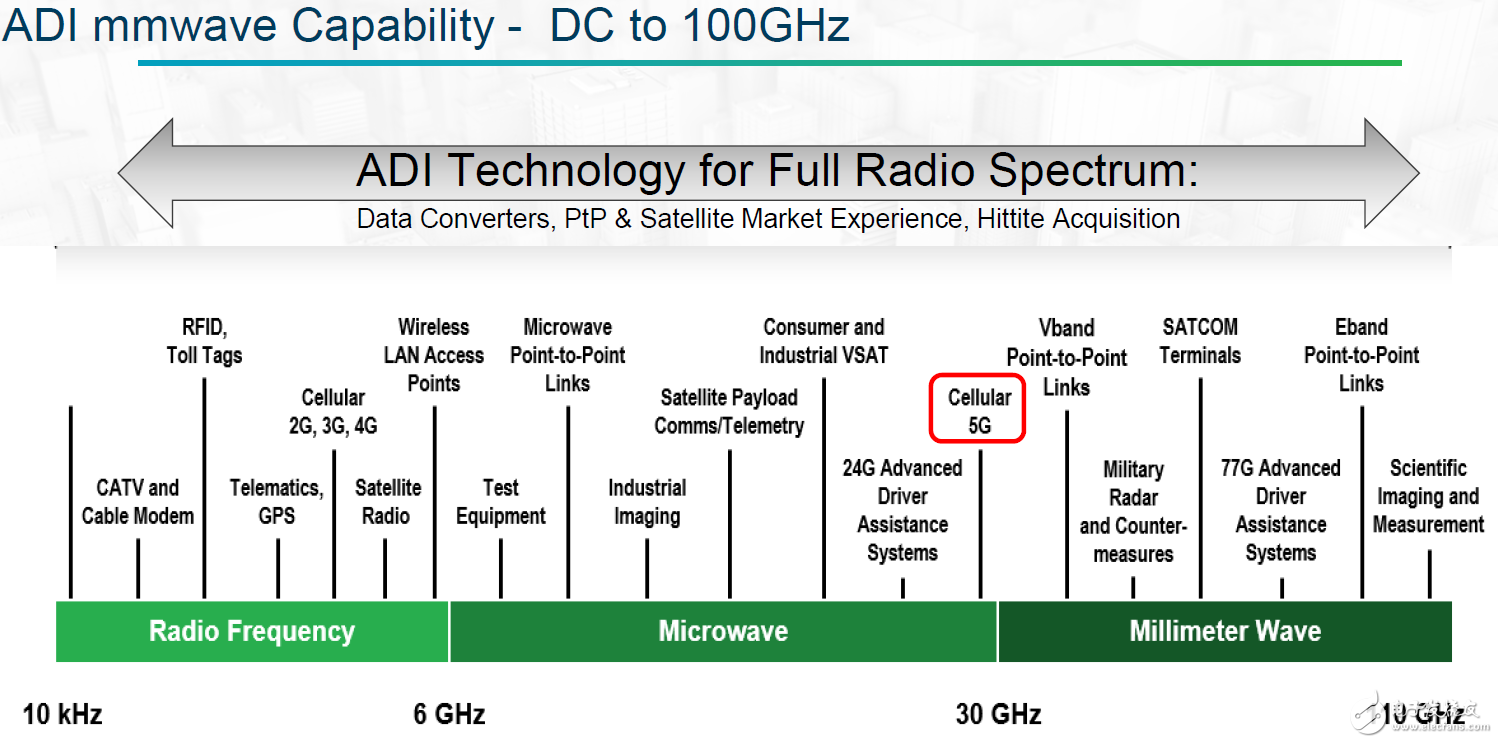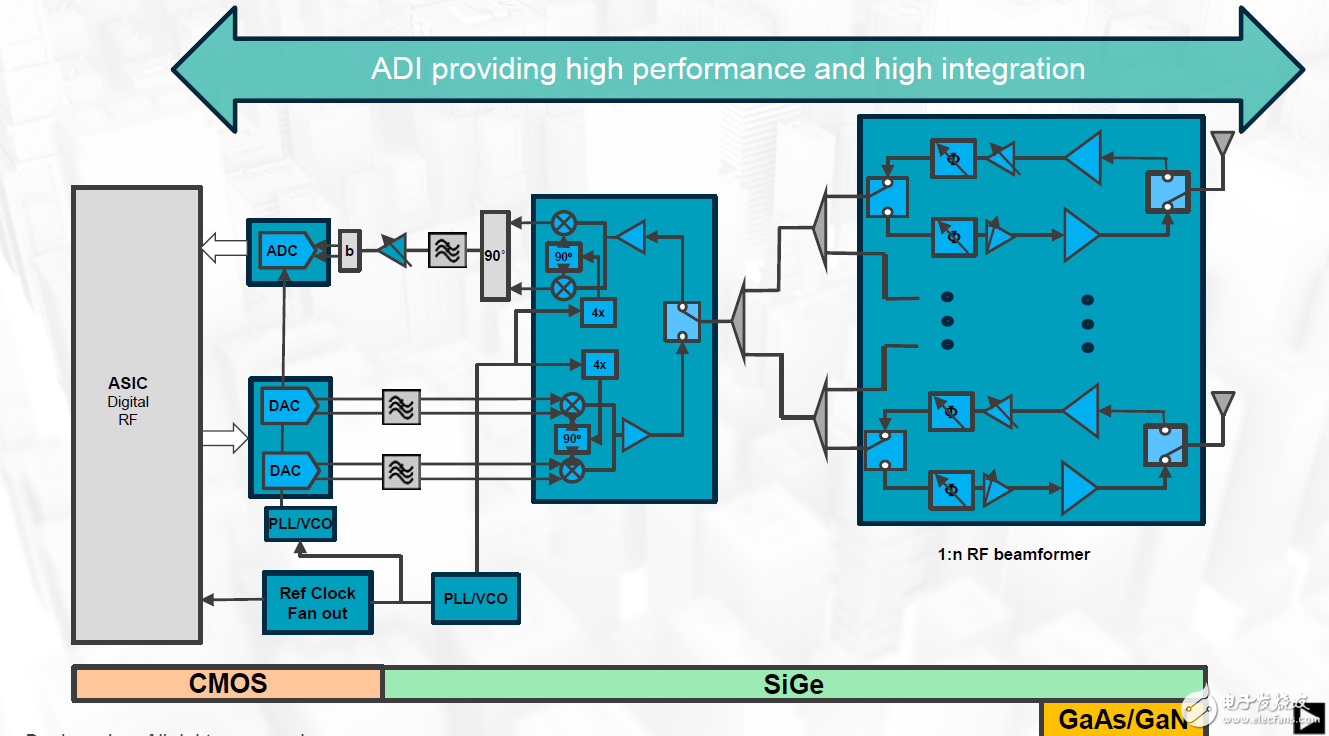In the next few years, there are still countless opportunities to promote 5G RF technology innovation, and the development of semiconductor process technology will undoubtedly play an important role. From the industry perspective, there is still a lot of work to be done, from process and material development to design techniques and modeling to high frequency testing and manufacturing. All disciplines will be involved in the realization of the 5G goal, and semiconductor engineering materials technology is the top priority. “With the advent of 5G technology, it’s exciting to become an RF microwave engineer now. On the road to 5G – the next generation of wireless communication systems, the engineering community has countless challenges and Opportunity. Dr. Thomas Cameron, Director of Wireless Technology at Analog Devices, once wrote that as an RF practitioner, he is looking forward to the arrival of 5G. “5G represents the evolution and revolution of mobile technology and has reached many of the members of the wireless ecosystem. High-level goals. How to meet the opportunities brought by 5G and solve the challenges that come with them? In the recent trip to China, Thomas faced the Chinese media interview, and semiconductor technology became an important part of it. The "new normal" of the semiconductor process technology route after 5G The development of semiconductor process technology is almost the main trajectory of the development of the core technology of global electronic technology. The first generation of semiconductor materials used silicon for almost a few decades to "ba screen" the global semiconductor industry. To date, most semiconductor devices and integrated circuits are based on silicon materials. Since the 1990s, with the rapid development of optical fiber communication and the Internet, the development of second-generation semiconductor materials represented by gallium arsenide (GaAs) has been promoted, and high-performance microwave, millimeter wave devices and light-emitting devices have been manufactured. Preferred materials are widely used in the fields of optical communication, wireless communication, GPS navigation, and the like. The third generation of semiconductor materials mainly include silicon carbide (SiC), gallium nitride (GaN), diamond, etc., due to their high band gap characteristics (greater than or equal to 2.3 electron volts, also known as wide band gap semiconductor materials), and With high breakdown electric field, high saturation electron velocity, high thermal conductivity, high electron density, high mobility, etc., it has been favored by manufacturers of solid-state light sources, power electronics and microwave RF devices in the industry, and has become an industry of optoelectronics and microelectronics. "New engine." In order to meet the business needs of the three major scenarios in the 5G era, 5G has proposed a number of technical requirements for systems and devices such as high speed, wideband, low power consumption, high frequency and low delay. For example, 5G systems operate at frequencies from low frequencies to 100 GHz, instantaneous bandwidths from 20 MHz to 1 GHz, and power amplifiers with average output power from a few W to tens of watts. In addition, 5G systems also need to have higher efficiency, lower energy consumption and lower cost requirements. Compared with the current mature Sub 6GHz 5G technology, the microwave and millimeter wave 5G technology that is expected by the industry is facing more challenges, and the innovation and transformation of semiconductor process technology bear the brunt. 5G semiconductor technology genealogy A signal chain of millimeter wave 5G, in fact, there are many different technologies involved in it, such as low frequency local digital and converter can use CMOS technology, and then go to the front end of the inverter, these integrated circuits will use some SiGe process, then In the place where the antenna is used, the process of using gallium arsenide or gallium nitride is used, so this is a combination of different technologies and technologies. "ADI is the only one in the industry to offer the entire soluTIon from digital to the entire antenna." Thomas said. "GaAs has been the mainstream technology in the microwave industry for many years. First-class microwave systems are usually implemented with GaAs components. But the SiGe process is overcoming high-frequency operation obstacles in order to compete with GaAs in multiple signal path functions." Thomas pointed out "In particular, the high-performance microwave SiGe Bi CMOS process has the high integration required for beamforming systems, benefiting many signal chains and auxiliary control functions." Beamforming technology is considered to be the key technology for future 5G microwave and millimeter wave communication. ADI covers all wireless bands from DC to 100 GHz. “Depending on the output power required for each antenna, GaAs PA may be required. However, even GaAs PAs (power amplifiers) are less efficient at microwave frequencies because they typically shift in the linear region.†Thomas It is said that the linearization of microwave PA is an inevitable choice to explore the 5G era, and this trend is even worse than in the past. So what are the opportunities for 5G applications as the “overlord†CMOS technology of traditional integrated circuits? Can you have a place? "A variety of documents have clearly pointed out that CMOS is suitable for large-scale scaling, which has been verified in the 60 GHz WiGig (Wireless Gigabit Network) system." Thomas affirmed. It is worth noting that ADI's exploration of CMOS semiconductor technology for microwave applications has come to the forefront of the industry, and has introduced a number of innovative 28nm CMOS high-speed converters for 4G/5G multi-band wireless communication base stations, multi-standard production test systems and Designed to protect GHz bandwidth applications such as electronics. "CMOS has the advantages of high integration, low power consumption and low cost in 5G applications. At present ADI is challenging and achieving achievements in smaller process sizes, which is also a direction for ADI's future efforts." Thomas said. "Considering that it is still in the early stages of development and the use cases are not clear, it is difficult to say whether CMOS will or will be used as a technology choice for 5G radios." Thomas pointed out that "there must be a lot of channel modeling and Use case work to summarize the radio specifications and the feasibility of using microwave CMOS in the future. "Technological exploration in this area will undoubtedly be the focus of future market competition. From digital signals to millimeter-wave signals, different advantages of semiconductor process technology cover the entire signal chain. This article summarizes: In the next few years, there are still countless opportunities to promote 5G RF technology innovation, and the development of semiconductor process technology will undoubtedly play an important role. As mentioned earlier, rigorous systems engineering achieves the best solution by using the best technology across the entire signal chain. From the industry perspective, there is still a lot of work to be done, from process and material development to design techniques and modeling to high frequency testing and manufacturing. All disciplines will be involved in the realization of the 5G goal, and semiconductor engineering materials technology is the top priority. Marine valve remote control device Marine valve remote control device Marine valve remote control device,valve remote control device,Marine valve remote control device price Taizhou Jiabo Instrument Technology Co., Ltd. , https://www.taizhoujbcbyq.com
